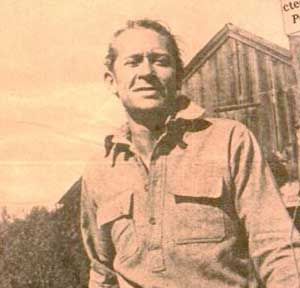E. E. Cummings (E E. E. Cummings)

Poet and writer. Born Edward Estlin Cummings in Cambridge, Massachusetts, he began writing poetry at age ten, and continued while studying at Cambridge Latin High School. He attended Harvard College, where his father was a professor, and received a BA Degree in 1915 and his MA Degree the following year. His studies provided him access to such writers as Gertrude Stein and Ezra Pound, whose influence could be seen in his later writings. He published his first book of poetry in 1917, in the anthology “Eight Harvard Poets.” After a short stint working for a mail order publishing company, in 1917 he volunteered for ambulance duty with the Norton-Harjes Ambulance Company in France during World War I. Because of his outspoken antiwar attitude, he was detained by French authorities on the suspicion of being a spy; after three months, he was cleared of espionage charges and freed. His experience in a French prison was described in his subsequent novel “The Enormous Room” (1922); it would be the first of his literary attacks on the evils of excessive government authority. His later book, “Eimi” (1933), would focus on the excesses of Soviet communism. At the end of World War I, Cummings traveled to Paris, where he studied art. Upon his return to the United States in 1924, he discovered he was something of a celebrity, for both his books, “The Enormous Room” and “Tulips and Chimneys” (1923), were widely read. Over the remainder of his life, he alternated among his house in rural New Hampshire, Greenwich Village and Paris, France, where he would meet with fellow poets, writers and artists. In his early years of writing, he experimented with different forms of writing poetry, changing punctuation, spelling and syntax, while discarding the traditional means of writing poetry and creating his own style of poetic -expression. This gained him great popularity with the reading public, especially for his simplicity and playfulness in the word form. In 1926, a job with Vanity Fair magazine gave him the means to travel and allowed him the freedom to pursue his avocation of painting in the afternoons and writing at night. His third marriage to photographer Marion Morehouse was considered his happiest, and he would often collaborate with her in books, of which “Adventures in Value” (1962), is considered their best work together. He received many awards during his lifetime, including being a Fellow in the Academy of American Poets, two Guggenheim Fellowships, the Bollingen Prize in Poetry and the Charles Eliot Norton Professorship at his alma mater, Harvard. At the time of his death in 1962, he was the second most widely read American poet, after Robert Frost. (bio by: Kit and Morgan Benson) Family links: Spouses: Marion Morehouse Cummings (1906 – 1969)* Elaine Orr MacDermott (1896 – 1974)* Children: Nancy Thayer Andrews (1919 – 2006)* *Calculated relationship
Born
- October, 14, 1894
- USA
Died
- September, 09, 1962
- USA
Other
- Cremated

